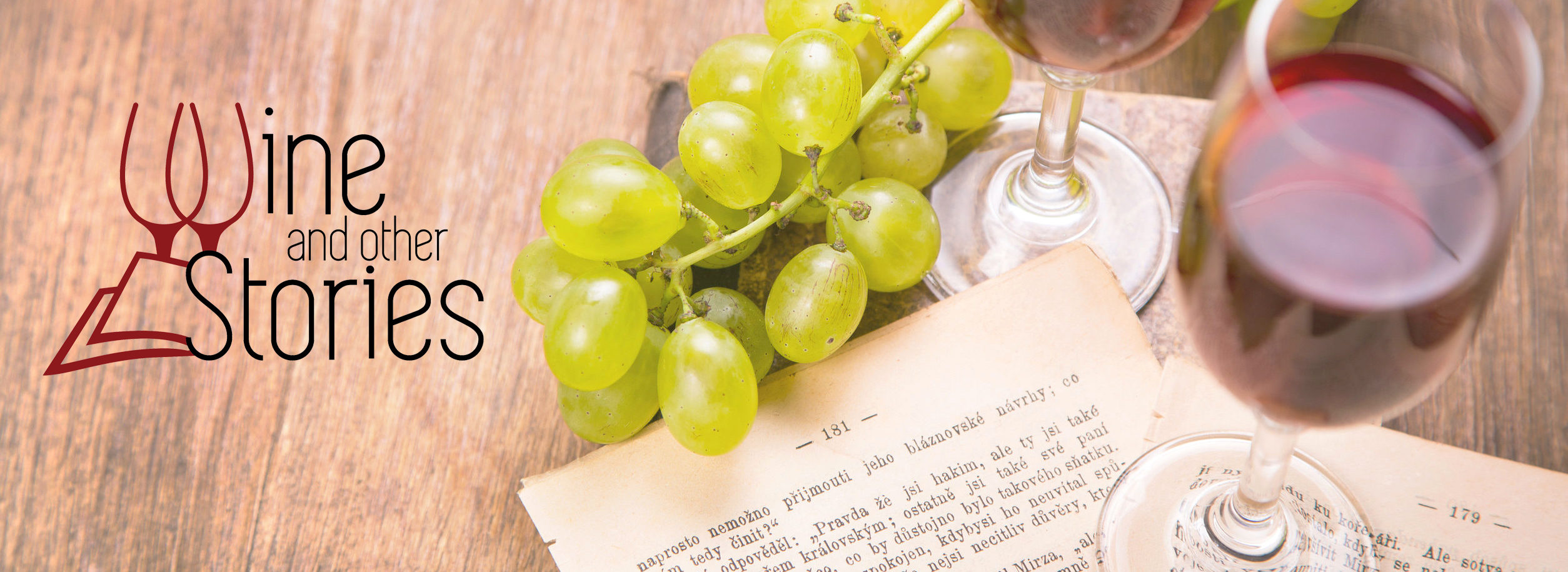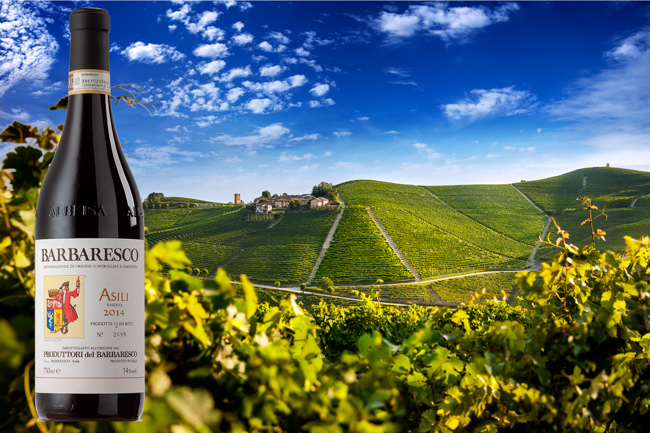Sour cherry meets aromatic dried herbs and umami undertones in this outstanding Barbaresco Riserva. Produttori del Barbaresco Asili is a complex and fascinating wine. After 15 years, the wine is at its peak
If you live in London, the period between October and December is the best time to taste wine. Merchants are in turbo mode in the run-up to Christmas. Wine tastings are everywhere. After savouring so many great wines this month, it was a struggle to choose only one as my Wine of the Month for November. However, I did manage to come to a decision. In the end, I opted for an outstanding Produttori del Barbaresco Asili 2004. I enjoyed this wine at an event organised by Michael Schuster.
Where the wine is from: Barbaresco
Barolo and Barbaresco are arguably the best places in Italy (and in the world… sorry to my Aussie friends!) for nebbiolo-based wine. Traditionally, Barolo is heralded as the wine of the kings, while Barbaresco as the wine of queens. The analogy is meant to emphasise that Barolo is typically more muscular and powerful. Barbaresco, on the other hand, is lighter, fruitier and more approachable. However, the distinction might hold water from merely a theoretical point of view. In practice (like many things in life), it’s much more complicated and the contrast less obvious. In fact, one might say that these appellations’ similarities overshadow their differences.

The Barbaresco region lies in Piemonte, in the north-west of Italy. It’s a small district, one third the size of the nearby Barolo. Barbaresco stretches for almost 1900 hectares east and north-east of the city of Alba. The vineyards have mostly south-facing slopes which sit at an altitude between 200 and 400 metres above sea level. The proximity to the River Tanaro adds a maritime twist to the climate in Barbaresco and causes the nebbiolo there to ripen earlier than in Barolo. Wines produced in Barbaresco are (generally) slightly less tannic and are able to be enjoyed earlier than their Barolo counterparts.
Barbaresco DOCG and the rising of Crus
Under appellation rules, Barbaresco DOCG must be aged for 2 years before release (including 18 months in oak). For the Riserva category (in which Asili falls), the age requirements are 26 months of ageing, 18 of which are spent in oak.
The three main towns in the Barbaresco appellation are its namesake Barbaresco, Neive and Treiso. In the past, Barbaresco wines were made from a blend of grapes coming from various parcels spread across the entire territory. However, in the last decade or so, Cru wines are emerging. Due to the identification of first-class quality plots, superior wines are being made exclusively from fruit sourced from such single vineyards – often referred to as Crus. Incidentally, the same trend for Cru wines is emerging in the nearby Barolo appellation too.
My Wine of the Month comes from Asili, a vineyard located south of the village of Barbaresco. Asili is a historical Cru for the entire region and is regarded as one of the best parcels in the whole Barbaresco commune.

Cooperatives – What are they?
The producer of my Wine of the Month is a wine cooperative called Produttori del Barbaresco. Cooperatives are owned by several grape growers and the facilities are shared across them. These members provide fruit to a common winery, divvying equipment among themselves and the winemaking team. Personally, I like the idea of winery that lacks a hierarchy or a centralised authority. I can only imagine it reinforces a certain synergy among farmers to strive for a common goal. But that is my romanticised view. I admit that in the real world, cooperatives are founded for less idealistic and more practical reasons.
Produttori del Barbaresco: a world class cooperative
Sometimes wines tell the story of a great personality. Other times, they tell the story of a place. In the case of Produttori del Barbaresco, their wine tells the story of a collective of families and growers that understood that together they could make something greater than the sum of their individual parts.
The seeds of Produttori del Barbaresco stem back to 1894, when oenology professor Domizio Cavazza founded the Barbaresco Cooperative. The business closed in the 1930s because of fascist economic rules. But in 1958 a priest from the village of Barbaresco resumed Cavazza’s initiative by gathering together 19 small wine growers in the area. Produttori del Barbaresco was officially founded.
Cooperatives are often looked upon with suspicion, as if their wines are somehow of inferior quality. Nothing could be further from the truth in the case of Produttori del Barbaresco. In the last 60 years, this cooperative has built a solid reputation of being among the best Barbaresco producers. Today, the cooperative has 51 members controlling an overall area of 100 hectares. Every year they produce a solid Barbaresco DOCG and an approachable Nebbiolo Langhe. In both cases, the wines are blends from grapes sourced from the vineyards of different members.
Only in the best years, Produttori del Barbaresco makes Riserva Crus. These wines come from selected parcels of superior terroir. Their single vineyard Riserva Cru wines are: Asili (my Wine of the Month), Rabajà, Pora, Montestefano, Ovello, Pajè, Montefico, Muncagota, and Rio Sordo.

The price of quality
Before delving into the tasting notes of my Wine of the Month for November, I would like to briefly share my thoughts on price. According to wine-searcher, Produttori del Barbaresco Asili costs £59 on average. Not a cheap wine by any means. But you have to consider what you get at that price.
A good place to start is to compare Asili with other wines of equivalent quality. It’s a slippery slope, so please take my following comments with a pinch of salt. Still, I believe it’s a useful exercise. For a top Premier Cru red Burgundy (at a conservative estimate) you should be prepared to spend nothing less than £100 – £150. On average, a Second Growth Left Bank Bordeaux will cost you around £80 – £200 depending on the vintage. Looking at Barolo single vineyard wines, there are few good-priced exceptional wines around £50 – £60, but the majority is closer to £70 – £80 or above.
Produttori del Barbaresco Asili is not a wine for everyday consumption (well, at least not for me!). But it belongs to a category of products that remain within reach for most wine lovers, at least as a treat to indulge in a few times a year. And what a treat!
Produttori del Barbaresco - Barbaresco Riserva Asili, 2004

 Country: Italy
Region/appellation: Piemonte - Barbaresco Riserva DOCG
Wine style: Dry red - Savoury and Classic
Grape(s): Nebbiolo
Average price: £59
Country: Italy
Region/appellation: Piemonte - Barbaresco Riserva DOCG
Wine style: Dry red - Savoury and Classic
Grape(s): Nebbiolo
Average price: £59
This cooperative was founded in 1958 by Don Fiorino Marengo, a priest from the village of Barbaresco. The growers gathered by Don Fiorino produced their first vintages in the basement of the rectory of a church. A few years later, the current winery was built across the street from their humble beginnings.
Today, the cooperative has 51 members that together control a 100 hectares area. Produttori del Barbaresco focuses solely on the nebbiolo grape. Every year, they produce approximately 45,000 cases of wine. Around 35% of Produttori’s production is devoted to their Riserva wines – Asili is counted among them. The Asili vineyard is a historical Cru laying just south of the Barbaresco commune.
Asili has 18 days of skin contact time during vinification. After fermentation, it is aged for 36 months in large oak barrels and 12 months in bottle before being released. In spite of being enjoyable upon release, Asili is suitable for long cellaring ageing. It can be kept for up to 20 years after bottling.
Tasting notes
(tasted on: 13-Nov-2019)
In the glass, the wine appears garnet, with medium intensity of colour. On the nose, it’s ethereal, perfumed and precise. It features a remarkable concentration of flavours, ranging from sour red cherry to cranberry, rose petals, aromatic herbs, autumn leaves, dried thyme and olive leaves. There’s also a balsamic edge, combined with umami undertones of tar, truffle and soya sauce. All these scents are wrapped in subtle notes of leather and toast. Extremely multi-layered, this wine is now at its
peak in terms of maturation, with a beautiful balance between primary, secondary and tertiary aromas.
On the palate, the wine is full in body. It opens with perfectly ripe and crunchy red fruit notes in the attack which combine with seductive floral nuances (rose, violets) and hints of tar and mushroom. In the mid-palate, some sweet notes emerge such as liquorice, anise, umami nuances and sultana suggestions. A touch of toffee reveals a beautiful and subtle oxidation which meld with smoky accents. The wine is high in acidity and tannins. The latter are polished and silky. Exhibiting a huge definition and concentration of flavours, this Barbaresco Riserva evolves in your mouth, revealing a supreme complexity. Tar, smoke and toast merge in the long harmonious finish. This wine is a masterpiece, a great treat for your senses.
Wine and other Stories rating: 9.7/10

